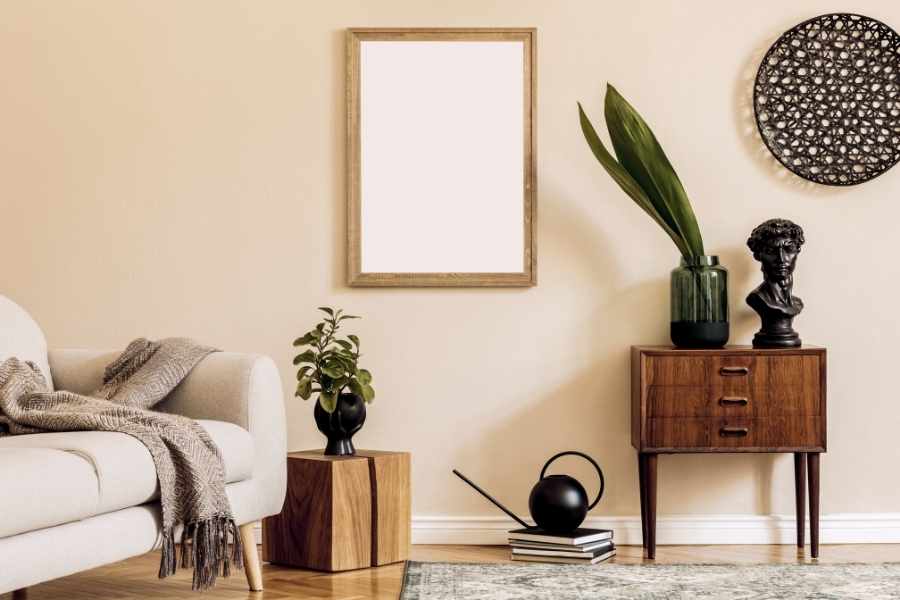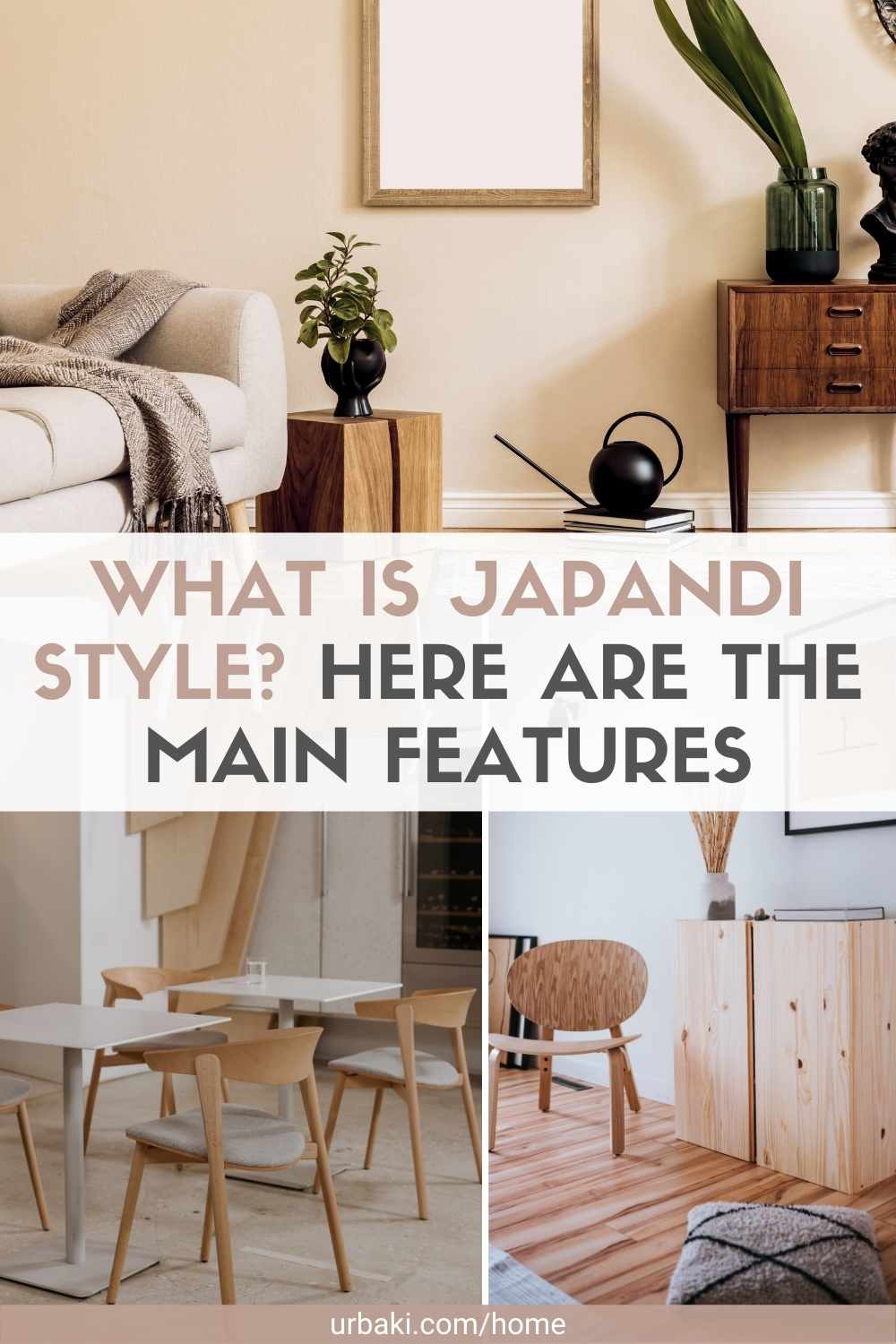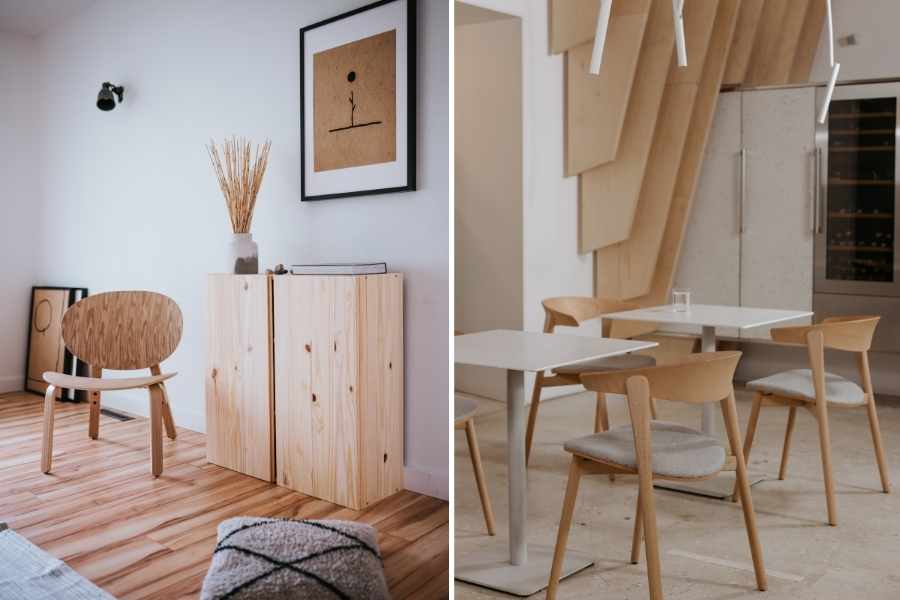What Is Japandi Style? Here are the Main Features

At first glance, Japanese and Scandinavian design might seem worlds apart.
However, these two aesthetics share a surprising number of similarities, making their combination—known as Japandi—a harmonious blend of functionality, simplicity, and natural beauty.
This fusion of Japanese rustic minimalism and Scandinavian functionality has become a favorite among designers and homeowners alike, and it's only growing in popularity.
Find Perfect Pieces to Complete Your Interior Style!
- Decorative Tabletop Fountain: Bring a calming, zen, and...
- Easy to Use: Quiet, built-in, submersible pump automatically...
- Artistic Design: Asian-inspired 3-tier design; unique...
- SPACE-SAVING CORNER DESIGN: This corner shelf features a...
- 5 TIER MULTIPURPOSE SHELVES: This corner bookshelf is...
- WEIGHT CAPACITY: Each shelf of this 5-tier display shelf...
- Package Contains: 4 kinds of faux plants indoor, these...
- Perfect Size: The fake house plants are 7" tall and 2.5"...
- Long Life Span: The fake potted plants is designed with...
What Defines Japandi Design?
Japandi is all about achieving balance. It combines clean lines, intentional design, and natural materials to create a space that is both functional and visually stunning.
According to Leni Calas of Ward 5 Design, Japandi is “the combination of Scandinavian functionality and Japanese rustic minimalism to create a sense of art, nature, and simplicity.” This approach emphasizes thoughtful craftsmanship, quality over quantity, and sustainable living.
Key Elements of Japandi Design
- Minimalism
Japandi spaces focus on clutter-free environments with open layouts. Everything in the room has a purpose, and no item feels out of place. The design avoids excess and values simplicity. - Natural Materials
Expect to see plenty of wood, bamboo, and stone incorporated into Japandi interiors. These materials create a connection to nature, which is a core principle in both Japanese and Scandinavian design. - Muted Colors
Neutral tones dominate the Japandi color palette. Whites, beiges, and soft grays are common, but subtle pops of pale green or richer neutrals like terracotta are used thoughtfully to add depth. - Sustainability
Eco-consciousness is a cornerstone of Japandi design. From the use of natural, renewable materials to handcrafted, long-lasting furniture, sustainability is baked into this style. - Handcrafted Pieces
Quality craftsmanship is highly valued. Japandi prioritizes handmade, durable furniture and decor that tell a story, rather than mass-produced or disposable items. - Balanced Aesthetics
Japandi merges the clean and crisp elements of Scandinavian design with the rustic warmth and imperfections of Japanese style. The result is a balanced, serene, and inviting space.
The Relationship Between Japanese and Scandinavian Design
Japandi works so well because both Japanese and Scandinavian design share a foundation in minimalism and comfort. While these approaches have their own distinct qualities, their differences complement each other beautifully.
Similarities Between the Styles
- Focus on Functionality: Both styles prioritize utility and intentionality, ensuring that every item has a purpose.
- Love for Nature: Both aesthetics incorporate natural elements and materials, creating a connection to the outdoors.
- Minimalist Foundations: Clean lines, open spaces, and a lack of clutter define both styles.
Where They Differ—and Complement Each Other
- Warmth vs. Elegance: Scandinavian design emphasizes coziness and warmth through soft textiles and light tones, while Japanese design is more elegant, using darker woods and simpler, understated decor. Together, they strike a perfect balance.
- Neutral Palettes: While Scandinavian interiors often feature cool whites and grays, Japanese design incorporates richer, earthy neutrals that add warmth to the space.
How to Decorate in Japandi Style
Bringing Japandi into your home is easier than you might think. With a focus on simplicity, natural materials, and intentionality, you can create a space that feels both modern and timeless.
Embrace Natural Materials
To create a Japandi-inspired space, focus on incorporating raw, unfinished materials like wood, bamboo, and stone. Furniture with clean lines and natural textures will instantly give your home a minimalist and earthy feel.
Use Muted and Neutral Colors
Stick to soft tones like beige, white, gray, and earthy neutrals. When using color, do so sparingly, and consider soft greens or terracotta hues to mimic the natural world.
Add Cozy Textures
Japandi combines the Scandinavian concept of Hygge (coziness) with the Japanese idea of wabi-sabi (finding beauty in imperfection). Add warm textures like wool throws, linen cushions, and soft rugs to create a welcoming, homey vibe.
Prioritize Functionality and Clean Lines
Furniture in Japandi spaces serves a dual purpose: it must be functional and visually appealing. Look for minimalist designs that offer storage or versatility while maintaining sleek, modern lines.
Incorporate Plants and Greenery
Bringing plants into your space is a hallmark of Japandi design. Choose simple, low-maintenance greenery like bonsai trees, succulents, or snake plants to enhance the connection to nature.
Reduce Clutter
A minimalist design requires clear, open spaces. Use natural containers like baskets or wooden boxes to keep items out of sight while maintaining a sense of order. Built-in storage solutions can also help keep your space neat and organized.
Sustainability and Japandi Style
One of the standout features of Japandi is its emphasis on sustainability. This design trend aligns with a growing desire among consumers for eco-friendly living. Here’s why Japandi fits perfectly into a sustainable lifestyle:
- Durable, High-Quality Furniture: Japandi rejects the disposable nature of fast furniture. Instead, it values pieces that are built to last.
- Natural Materials: The use of bamboo, wood, and stone not only adds to the aesthetic but also supports eco-conscious living.
- Timeless Design: By focusing on classic, minimalist designs, Japandi avoids trends that quickly become outdated, reducing the need to redecorate frequently.
The Growing Appeal of Japandi
Japandi is more than just a fleeting design trend—it’s a lifestyle that prioritizes simplicity, comfort, and sustainability.
Its focus on creating serene, functional spaces resonates with people seeking a refuge from busy, modern life. As more consumers embrace eco-friendly and intentional living, Japandi’s popularity will only continue to grow.
Final Thoughts
Japandi is the perfect marriage of Japanese elegance and Scandinavian coziness, creating a design style that is both functional and beautiful.
Whether you’re drawn to its sustainable principles, its minimalist aesthetic, or its calming vibe, Japandi offers a timeless and meaningful approach to home decor.
By blending natural materials, clean lines, and thoughtful craftsmanship, you can create a space that feels like a sanctuary every time you walk through the door.
We Hope You Enjoy Watching this Video

Source: Posh Pennies
Did you find this post useful or inspiring? Save THIS PIN to your HOME Board on Pinterest! 



More Home Tips 👇🏼👇🏼